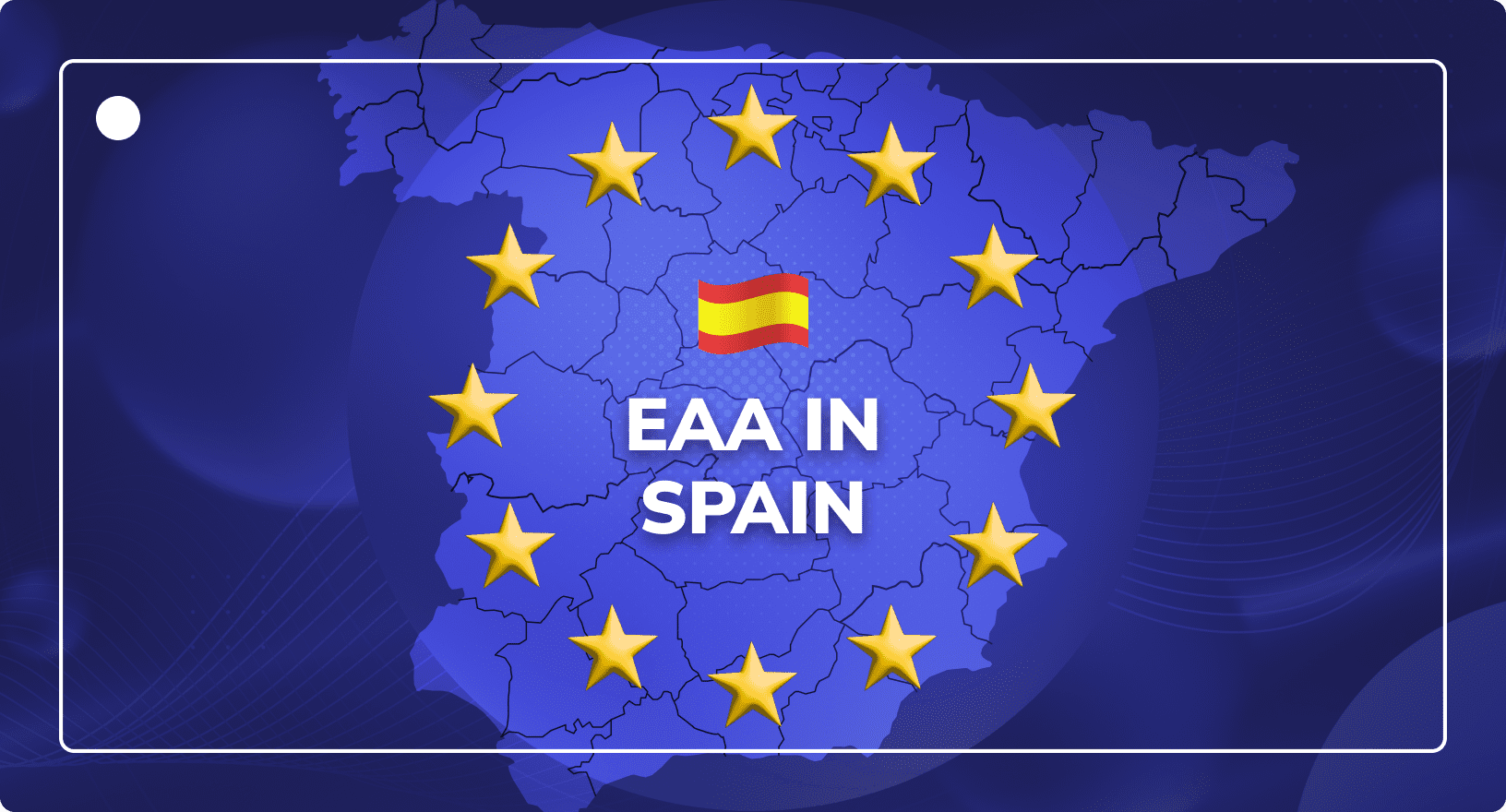Maximizing Efficiency: How to Optimise Product Video Cost
Content Creation
Updated on February 14, 2025
Successful e-commerce marketing relies heavily on visual storytelling and product videos. However, product video costs can become expensive quickly. And, brands need to know and manage video marketing expenses to get the most out of their budget.
There are several factors involved when figuring out how much it will cost to make a product video. In this article, we’ll talk about making video production more efficient while still being cost-effective.
How Much Does a Product Video Cost?
Calculating the cost of producing a product video can feel like solving a complicated puzzle. It’s a question that doesn’t have a one-size-fits-all answer. Product video production prices can vary based on several factors.
Businesses can invest an average between €3,000 to €25,000 per video for a commercial-grade product video. We will explore several key elements that influence this range in detail. Each of these factors plays a role in shaping the final cost of your product video and includes:
- Product and Video Complexity
- Video Length
- Talent Costs
- Cost of Time Spent on Creation, Edits, and Publication
- Necessary Equipment
- Location and Logistics
- Type of Team You Hire
Product Video Production Cost Breakdown
To understand product video production costs,we must break them down into stages. The stages are pre-production, filming, post-production, and publication. Each phase contributes to the final cost.
In the pre-production phase, incurred costs include planning, scripting, and storyboarding. This process sets the foundation for your video and involves critical, creative decisions.
During the filming or production stage, the actual shooting takes place. It incurs expenses for equipment, talent, and location.
Next up is post-production. It involves editing, adding effects, and refining the video.
Finally, publication costs arise from distributing and promoting the video across various platforms.
Producing these videos yourself may seem more affordable. Yet, without skills, knowledge, and expertise, it can have a significant impact on your return on investment.
Understanding the costs and value of each stage and utilizing professional input is essential. Next, we explore each step in detail to give you a complete picture of how to plan a product video budget.
Pre-Production Costs
Pre-production costs cover all the expenses in the beginning stage of your project. In this stage, you plan and outline your project to create its foundation. Hiring professionals like scriptwriters is a common practice during this phase.
The rates for such professionals range from €50 to €150 per hour. Writing a script for a professional-grade product video could take around 6 hours of work. This part alone could cost between €300 and €900.
Production Costs
Throughout production, product video costs are typically calculated with daily rates. There are costs for the cast, crew, location, insurance, and equipment during this stage.
Of course, you must also consider related expenses, like product video production insurance. This insurance is vital for protecting your brand and employees from unexpected problems while filming.
The cast and crew are pivotal to your production, and their costs can vary based on experience and demand. Be sure to hire experienced professionals for a smoother production process and higher-quality output.
This investment in talent is as crucial as any other production expense, directly impacting the final quality of your product video.
The cost of renting equipment varies based on its quality and complexity. Some examples might include high-definition cameras, lighting, and sound equipment. Here is the average cost of product video production, broken down by function or job:
- Director / Videographer – €500 – €1,000 per day
- Equipment – €200 – €10,000 per day
- Crew – €200 – €1,000 per day
- Influencer – €1,000 – €5,000 per day
- Logistics – €40 – €200 per day
- Sound Technician – €200 – €750 per day
- Meals – €100 – €1,000 per day
- Insurance – €300 – €3,000 per day
During the production phase, costs accumulate quickly. You can expect to pay anywhere from €2,500 to €23,000 per day for filming. The best way to optimize product video cost is by filming multiple projects in a day.
Or, you can optimize your budget by considering all factors and evaluating what can be excluded. Using this method, you can make the most of your team and budget while saving money on each video.
The table shows the direct costs of making product videos. But there are also extra costs to consider. One often-forgotten cost is the time spent finding and getting the materials for making your videos.
Internal labor, such as the individuals doing these tasks, can be significant, especially in bigger projects. It’s a hidden cost that, while not billed, impacts your company’s budget and resource allocation.
Outsourcing your projects to a professional video production company is often the correct strategic decision for many brands. Doing so could save up to 90% of the time and associated costs you would otherwise spend managing this process in-house.
Post-Production Costs
Product video post-production costs include any expense accrued after filming. During post-production, video editors edit the footage, add subtitles, include graphics, and make improvements. These elements are what turn uncut footage into a finished video.
- Editing software – €25.99 per month per license
- Video editor – €75 – €150 per hour
- Translator – €20 – €100 per hour
- Graphic Designer (if necessary) – €20 – €100 per hour
Publication Costs
An aspect of video production brands all too often overlook is how much it costs to distribute finished content. This cost is important for calculating your video’s ROI.
The single most important source of ROI for your product videos is their visibility and engagement across all channels. It is where content syndication strategies become crucial. You can increase their impact and reach by distributing your videos to several platforms.
Check out our guide to learn more about effective product content syndication.
Setting Your Product Video Production Budget
Before you set a product video production budget, it’s vital to consider all the costs associated with the various stages of production.
These include pre-production, filming, post-production, and distribution costs. This way, you have a complete overview of your budget from the start of the project to the finish.
A thorough understanding of the industry is crucial in this planning phase. To create a realistic budget, you must understand the stages of production and any costs associated, such as locations, filming, crews, equipment, and editing software.
Moreover, a savvy budget planner always allows for a contingency fund. Video production often comes with unexpected costs. Having some extra budget set aside often helps projects run smoothly.
We provide detailed cost estimates for each production stage in the upcoming sections. These breakdowns offer you a clearer picture of what to expect at each step of your product video journey.
Variables Affecting Product Video Prices
Understanding the factors affecting product video prices helps reduce production costs. The following sections demonstrate how certain factors influence the cost of your project.
Variable Product Video Costs
Video length
Quality
Revisions & Reshoots
Animations
Sound & Music
Cast & Crew
Equipment
Insurance & Meals
Video Length
Extended footage requires more filming, editing, and post-production, increasing expenses. Length means more potential errors, and complexity adds time to the project, both of which impact the budget.
Quality
The quality of a product video is intrinsically linked to its production costs. Achieving high-quality footage necessitates the use of advanced equipment and the expertise of skilled professionals.
Additionally, post-production work, such as editing and color grading, significantly enhances the final output.
While these factors contribute to higher product video costs, it’s important to recognize that investing in quality can significantly boost viewer engagement and, ultimately, the return on investment.
High-quality videos are more likely to capture and retain audience attention, making them a worthwhile investment. For more, read our guide on how to create better e-commerce product videos.
Revisions and Reshoots
Mistakes in video production are costly, and total reshoots can double your product video costs before you even have a chance to edit the content. Thorough planning and clear communication are critical during pre-production to avoid expensive setbacks.
Fewer changes and reshoots will occur when everyone understands and agrees on a vision and goals.
Animations
Animated product video production costs are similar to producing live-action videos because it requires a team and related equipment for each stage of production.
These product video costs typically include scripting and storyboarding, creating illustrations, and animation costs. Other costs include post-production elements like voiceovers, music, and effects.
- Script / Storyboard – €50 – €600
- Illustrations – €250 – €7,500
- Animation – €500 – €15,000
- Post-production (voiceovers, music, effects) – €50 – €1,000
So, the average cost for a video with animations can fall between €850 and €25,000. Naturally, this also depends on the complexity and quality of the animations.
Sound & Music
Sound and music enhance a product video’s emotional impact and appeal. But, licensing music for commercial use also requires investment. Depending on the licensing terms, fees range from a few euros to several thousand.
Talent
Influencers, product experts, and actors all influence a product video’s effectiveness. Influencers typically charge a flat rate per video, while actors or actresses may charge by the hour. Sourcing talent and negotiating contracts is also time-consuming and must be factored into your budget.
Additionally, there’s no guarantee you will find the right person who matches your brand’s message and audience. If you fail to find the right influencer, you can expect to reshoot your entire video.
How Much Does Video Production Equipment Cost?
Many companies rent video production equipment because it’s more practical than owning studio-grade film equipment.
You need trained operators to use high-quality cameras, lighting rigs, dollies, and boom mics. Many brands do not own equipment because it requires a lot of expertise simply to maintain and store.
Renting equipment offers a more affordable option for most. It allows access to top-tier gear without the total cost of ownership.
However, this approach means that each video project incurs a rental cost, which adds over time. These costs vary based on the quality and sophistication of the equipment needed.
Moreover, the necessity for skilled operators adds another layer to your product video production budget. These professionals are trained to use the equipment to its full potential and contribute to the production’s quality.
They have the expertise to achieve the desired visual and audio effects, which make your product video more impactful.
To summarize, buying video production equipment for your brand may seem like the right idea at first, but maintenance and storage costs usually make it more of a headache than it’s worth. Plus, the upfront cost and need for skilled operators make it impractical for most brands.
- 4K Camera – €1,000 – €10,000
- Sound equipment – €500 – €5,000
- Lighting and Rigging – €500 – €10,000
- Backgrounds / Green Screens – €250 – €2,000
- Dollies / Gimbals / Other Misc. – €1,500 – €20,000
Along with the price of production equipment, there are other costs of ownership often overlooked. Considering the average cost of this equipment can escalate to between €5,000 and €50,000 or more, your product video production budget needs to reflect this.
For brands that don’t specialize in marketing or require frequent video production, owning production equipment can be more of a burden than a benefit.
Beyond the initial purchase, there are ongoing considerations like storage space, maintenance expertise, and the logistics of transportation.

These factors can quickly escalate into significant challenges. Renting equipment might seem like a viable alternative, but it comes with its own set of complications, including managing logistics, ensuring availability, and handling setup and operation.
Outsourcing video production, on the other hand, offers a hassle-free solution. It eliminates the need for equipment ownership, rental management, and the intricacies of editing and post-production.
By choosing to outsource, brands can focus on their core competencies while leaving the complexities of video production to experienced professionals. This approach streamlines the process and ensures high-quality output with zero burden on the brand.
- Camera – €100 – €500
- Lenses – €100 – €800 ea. per day
- Generator – €100 – €300 ea. per day
- Tripods – €75 – €200 ea. per day
- Lights – €100 – €500 per day
While renting video production equipment might initially appear more cost-effective than purchasing, it still presents significant expenses.
The rental fees, though lower than the substantial investment required for purchasing and maintaining high-end equipment, can accumulate quickly, especially for projects with extended timelines or frequent production needs.
Many companies outsource video production because it is far more cost-effective and flexible than renting. Outsourcing saves money on equipment and benefits from professionals’ expertise for better results.
How to Optimize Product Video Production Costs
Product video cost optimisation is necessary to generate a significant return on investment (ROI). In the following sections, we explore how to help you streamline product video production costs. Each step guides you through creating high-quality footage while keeping costs down.
How to Optimise Product Video Costs
Set objectives
Cost analysis
Team selection
Planning
Pre-production
Filming
Post-production
Publication
Monitor KPIs
Repurpose content
Step 1: Set Objectives, Project Scope, and Budget
Successful projects begin with defined objectives, comprehensive project scoping, and a planned budget. Setting clear goals for your video, like brand awareness or education, is essential. These objectives influence the video’s creative direction, length, and complexity.
Establishing a clear scope is essential to maintain control over your product video production budget. This approach helps in effectively managing resources and avoiding unexpected costs, ensuring a cost-effective production process.
With a well-defined budget, you can allocate funds appropriately across different stages of production, from pre-production planning to post-production editing and distribution.
This strategic budgeting keeps costs in check and allows for more precise financial planning, contributing to a smoother and more efficient production workflow.
Step 2: Conduct a Product Video Cost Analysis
Conducting a thorough product video cost analysis is pivotal. Treat the budget and cost analysis as a living document during the planning phase.
It must be flexible enough to accommodate changes and updates as more information becomes available or project requirements evolve. Once it’s finalized and approved, the production process should stay consistent and clear.
A thorough analysis should examine all options to understand the costs. It includes detailing expenses for location, personnel, equipment, and other essential aspects of video production.
This clarity is crucial for all stakeholders involved, enabling them to understand the implications of each decision and its impact on the budget.
This step is also where you decide whether to conduct your product video shoot in-house or outsource it to a third-party company. Hiring a specialized video production company can save money if your team doesn’t have the right equipment or skills.
Before you begin, consider the pros and cons of all options so you can create a product video production budget in line with your company’s goals..
Step 3: Select Your Team
Selecting the right team is crucial for the success of your project. Video production requires individuals with specific skills and experience, which most brands lack.
Even if these skills are available internally, scaling production requires additional support. In such scenarios, outsourcing becomes a practical and efficient solution.
If you consider outsourcing, it’s important to recognize that some production companies specialize in particular types of product videos.
For an e-commerce brand, the ideal partner is one with expertise in product videography, finding influencers, and content distribution. For more insights on product videos, check out our ultimate guide to product videos.
We specialize in product review videos and converting 2D product images into product videos. An e-commerce business needs a partner that’s knowledgeable in specialised technologies like advanced 3D modelling software and influencer access.
When working with a production company, you can often negotiate discounts for larger packages. It can save you a lot of money. It is particularly beneficial for brands with broad product catalogs.
Still haven’t tried outsourcing product video production yet? Let us know your requirements, and we’ll show you how you can achieve 34% more conversions for 80% of the cost of traditional agencies.
Not Enough ROI on Product Videos?
Optimise product video costs and multiply your ROI with DemoUp Cliplister.
Step 4: Develop Your Plan
The development of your plan is a critical step in the product video production process. This plan should be comprehensive, covering every aspect of production, from initial concept to final edits.
Start by outlining the project’s objectives and the story you want to tell. This will guide the direction of your video and ensure that all team members are aligned with the vision.
Next, detail the logistics: locations, schedules, equipment needs, and personnel involved. This includes deciding whether to use in-house resources, hire external professionals, or combine both.
For each aspect of production, assign clear responsibilities and set firm deadlines. This level of detail in your plan helps prevent misunderstandings and ensures that everyone knows their role, contributing to a more efficient production process.
Also, consider the post-production phase in your plan. Decide on the editing software, special effects, and any additional elements like music or voiceovers. Planning for these elements in advance can save time and resources during editing.
Remember, a well-thought-out plan is more than a schedule; it’s a tool to ensure that your project stays on track, within budget, and meets your quality standards. Invest time in developing a detailed plan to set the stage for a successful and cost-effective product video production.
Step 5: Pre-Production & Set-Up
Pre-production begins with a detailed script. This script should convey your message and outline the visual narrative.
It’s the blueprint of your video, guiding every subsequent step. Invest time in refining this script to ensure it aligns with your objectives and brand voice.
Next, create a storyboard. This visual representation of your script breaks down the video scene by scene. It should include sketches or images representing each shot and notes about camera angles, lighting, and dialogue.
A well-crafted storyboard helps visualise the final product, facilitating better communication among team members and eliminating misunderstandings, which further reduces product video costs.
Regarding location, choose wisely. Opt for locations that align with your video’s theme and require minimal setup. Locations that are naturally suited to your script’s requirements save time and money on set design and adjustments.
If possible, use your existing spaces, like stores, showrooms, or the environment in which a product is typically used to add authenticity to your video while keeping costs low.
Remember, the goal of pre-production is to plan as thoroughly as possible. The more issues you can anticipate and solve at this stage, the smoother your production phase will be, leading to a more cost-effective and successful product video.
Step 6: Maximise Filming Efficiency
To maximise filming efficiency in product video production, start by aligning your equipment and personnel choices with your budget and the desired video quality. Here’s how to do it:
- Equipment Selection: Choose equipment that meets your quality standards while staying within budget. Consider renting or leasing high-quality gear instead of purchasing it. This approach provides access to top-tier equipment at a fraction of the cost and eliminates maintenance and storage concerns.
- Personnel Allocation: Ensure your crew is skilled and efficient. If your in-house team lacks certain skills, hiring freelance professionals or a production company for specific roles can be more cost-effective than training existing staff.
- Shooting Schedule: Develop a detailed shooting schedule. This plan should include a comprehensive shot list and the sequence of scenes to be filmed. Efficient scheduling ensures that every minute on set is used productively, reducing the likelihood of overtime costs.
- Preparation and Organisation: Before filming, ensure all necessary equipment, props, and personnel are ready. This preparation minimises delays caused by missing items or unprepared crew members.
- Minimise Reshoots: Aim to get each shot right first and edit ruthlessly. This requires clear communication of your vision to the crew and actors. Reshoots can significantly inflate costs, so thorough preparation and effective direction on set are key.
Focusing on these areas can significantly enhance filming efficiency, keeping your project on track and within budget, ultimately leading to a successful and cost-effective product video.
Not Enough ROI on Product Videos?
Optimise product video costs and multiply your ROI with DemoUp Cliplister.
Step 7: Post-Production Optimisation
Optimizing the post-production phase is essential to maintain product video cost-effectiveness and ensuring a high-quality final product. Here are key steps to achieve this:
- Choose High-Quality Editing Software: Select reliable and efficient editing software. We use Adobe Premiere Pro and After Effects. This software offers advanced features that reduce the effort required for post-production work. It allows for precise editing, color correction, and effects, which enhance the video’s quality.
- Implement Digital Asset Management: Establish a robust digital asset management system. This is your single source of truth for video files, graphics, music, and other digital assets. Ensure these assets are accessible and well-categorised. This helps minimise hourly product video production costs because everyone knows where to find related materials.
- Streamline the Editing Process: Develop a clear editing workflow. This should include steps for initial cuts, revisions, adding effects, sound editing, and finalizing the video. A structured approach to editing helps maintain consistency and reduces the need for multiple revisions.
- Regular Reviews and Feedback: Incorporate regular review cycles into your editing process. Getting timely feedback from relevant stakeholders can help in making necessary adjustments early in the process, avoiding the product video costs associated with reworks.
- Backup and Version Control: Always maintain backups of your work and practice version control. This ensures that you can revert to previous versions if needed and protects against data loss.
For more insights on this, explore our article on digital asset management. Effective management of digital assets saves time and helps maintain the consistency and quality of the final content.
Step 8: Implement Effective Content Distribution Strategies
To optimise product video costs, implementing effective content distribution or syndication strategies is crucial. Here’s how to do it:
- Leverage Content Syndication Platforms: Utilise platforms that specialise in product video syndication. These platforms can distribute your content across various online retailers and marketplaces efficiently. Discover more about product content syndication by clicking the link.
For example, our product video syndication solution connects your videos directly to product pages at over 450 retailers worldwide. If you’re not convinced, read our article about how we stack up against the best product content syndication software.
- Automate Content Updates: Automate the process of updating and distributing new content. This reduces retailers’ reliance on manual updates, saving time and resources. Automation ensures that your latest videos are quickly available across all platforms, keeping your product information up-to-date and consistent by linking videos to product pages with EANs.
- Focus on ROI-Driven Platforms: Identify and prioritise platforms that offer the best return on investment. This involves analyzing where your target audience spends most of their time and which platforms drive the most engagement and sales. By focusing on these platforms, you ensure that your product video production costs see a return.
- Monitor Performance and Adjust Strategy: Regularly monitor the performance of your content. Use analytics to understand view rates, revenue uplifts, and other key metrics. Based on this data, adjust your distribution strategy to focus on the most effective channels and formats.
- Repurpose Content for Different Channels: Adapt your product videos for different platforms. For instance, create shorter versions for social media, teasers for email marketing, and detailed videos for your website and PDPs. This approach maximises the utility of your content across various channels without incurring significant additional costs.
By following these steps, you can ensure that your product videos reach a wide audience efficiently, enhancing the return on you initial product video costs.
Not Enough ROI on Product Videos?
Optimise product video costs and multiply your ROI with DemoUp Cliplister.
Step 9: Monitor and Adjust
Product video cost optimisation is an ongoing process. It requires continuous monitoring and adjustments. It’s important to review your production expenses. Look for areas where you can make improvements or find cost-saving opportunities.
By staying alert and flexible, you can react to cost changes and find ways to save money. To make your video production cost-effective, analyze your spending and production processes. It will maximise your return on investment.
Step 10: Repurpose Content
Repurposing existing content is a smart strategy to maximise the value of your initial investment. By creatively reusing your video content, you can extend its life and reach. For instance, you can edit longer product videos into some of the following examples:
Repurpose Videos Into:
Shorter clips
Teasers
Product promo videos
Social media ads
Assets for your website
This helps you build a compelling business case and focus on product video cost optimisation, rather than the initial investment.
That’s a Wrap!
In conclusion, understanding and managing product video production costs is crucial for any business that wants to leverage video content effectively. From pre-production planning to post-production and distribution, each stage carries its own set of costs.
If you follow the steps outlined in this article, you can optimise these costs and ensure a better ROI.
Remember, the key to successful video production is a well-thought-out plan that helps you create high-quality content. But it does no good if nobody sees it. By partnering with us, you can create stunning PDP content, syndicate it to 450+ retailers worldwide, and update it with a single click.
Want to take your product video strategy to the next level? Fill out the form below, and a friendly member of our team will be in touch.
Frequently Asked Questions About Product Video Costs
Still have questions about product video cost optimisation? Read the FAQs below for our answers to the most asked questions we receive from our clients.
The cost to produce a product video varies widely, from hundreds to thousands of dollars, depending on complexity, length, and quality.
Calculate the cost per video by factoring in pre-production, production, and post-production expenses, divided by the number of videos. With our syndication service, you divide the cost per video by the number of retailers you syndicate it to.
Our video production charges vary. Be sure to contact us so we can discuss your exact requirements and provide you with an accurate price.
Post-production costs cover editing, music, graphics, and final touches, typically adding to the overall production expenses. It also includes the cost of the software used to implement these features.
The average cost of a product video depends on the types of product videos you wish to produce. Be sure to book a call with us to discuss your needs so we can tell you an accurate average price per video.
Better Content. More Sales.

Fill out the form to discover our end-to-end eCommerce content solutions for brands & shops




